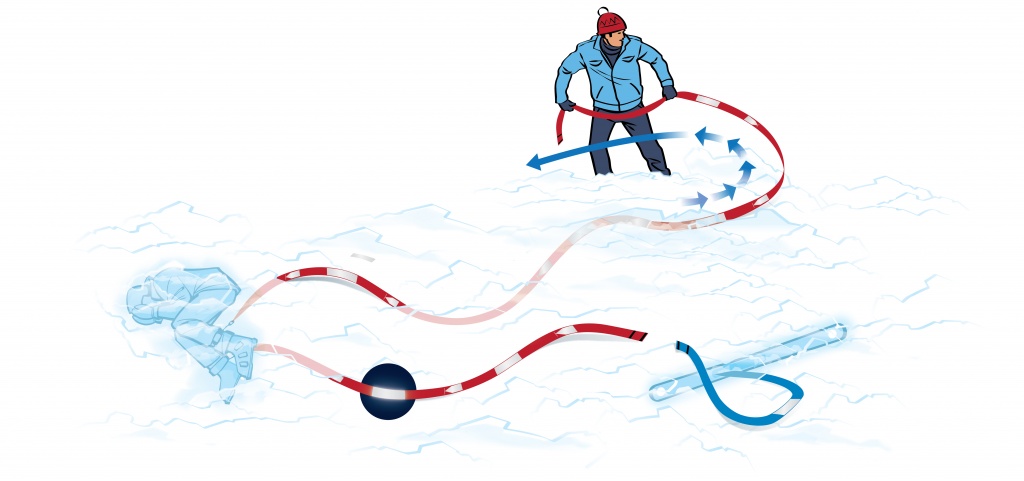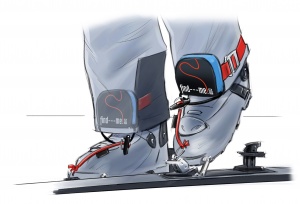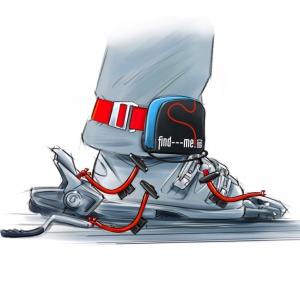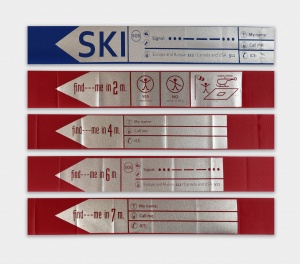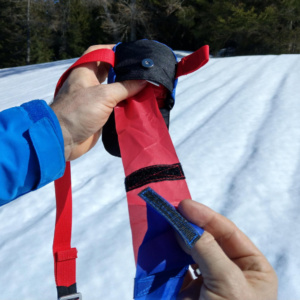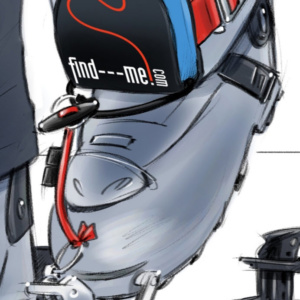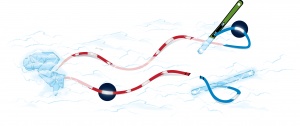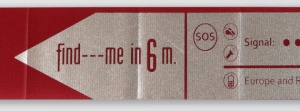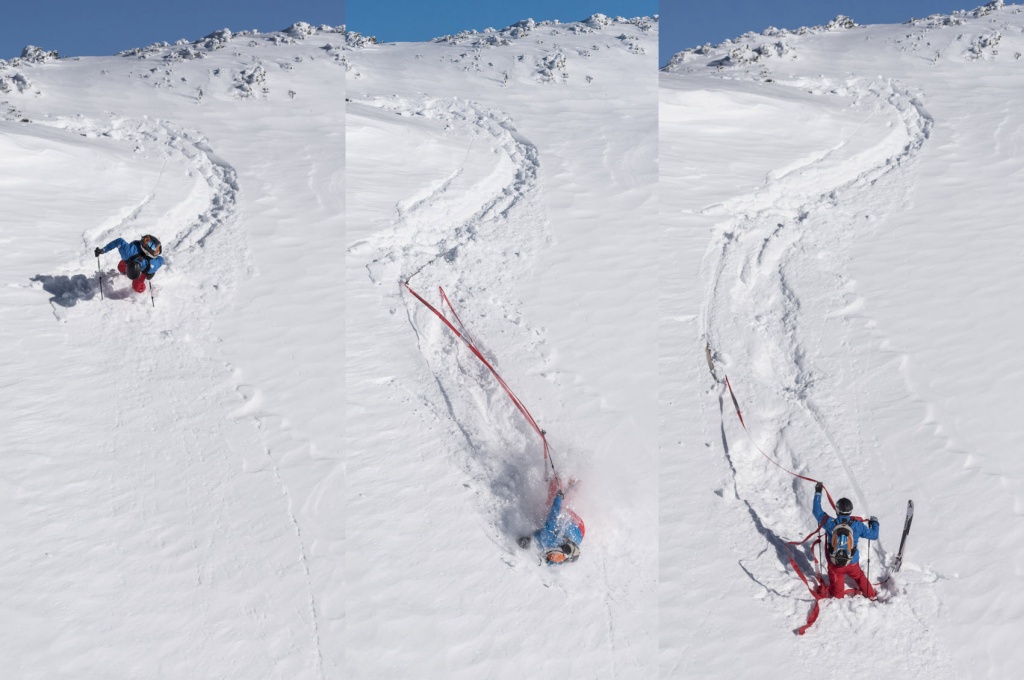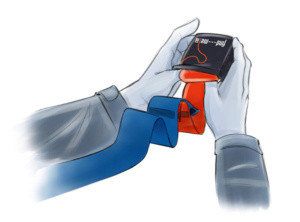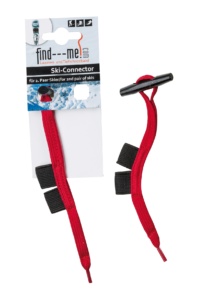find—me! Avalanche and powder leash
Alpine skiing area: Never ski without find—me
Chances of avalanche survival drop rapidly after 15 minutes. With the help of these avalanche bands, buried people can be found much quicker.
Find it quicker:
skis buried in deep snow or a person in an avalanche
Rescue system for wintersports, outdoor activity
Find—me! are 2 × 10 m long avalanche and powder leash (deep snow bands). 8m red bands for human, 2m blue for skies. Connected with a safety-velcro.
If the skis are released, simply pull the bands from the small pouch and both skis and people will be found quickly.
The pouch are fixed under or over the ski pants.
The Ski fixation is mounted at the front or rear bindings or ski-stoppers.
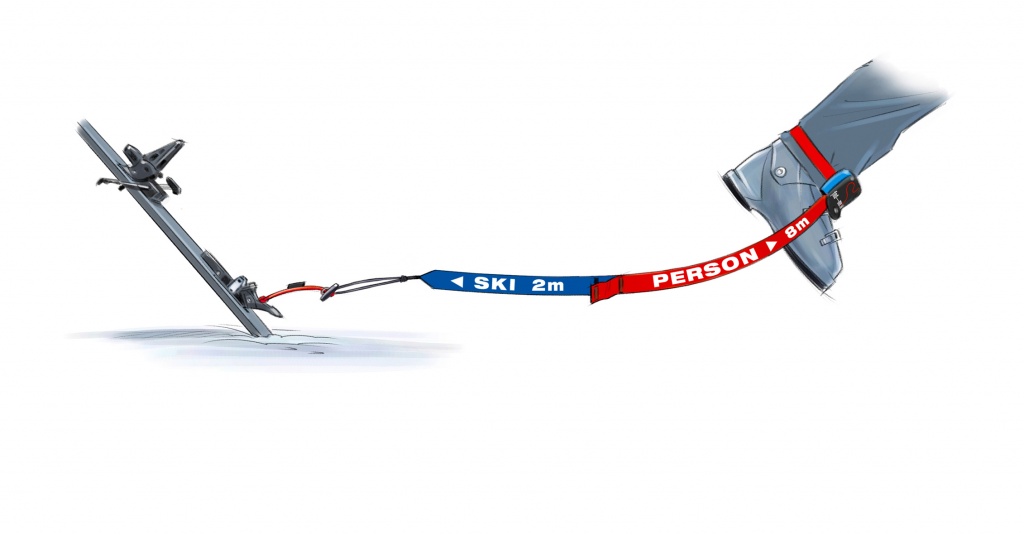
1.
Befor the first ride
Avalanche and powder leash to find skis and buried persons.
First attach both ski fastenings to the bindings, ideally into the front part of the binding although it can also be attached to the back or ski-stopper. They can remain fixed to the binding.
Write your name, mobile phone number and ICE (in case of emergency) number on the bands.
Have a look to the videos.
My name: Peter Mustermann
Call me: +43 600 000 000
ICE: +43 100 000 000
Reflective directional arrows show the distance to and the direction of the buried person. International emergency numbers, SOS and rescue tips, and helicopter tips will always be with you.
Please check:
Are the long red bands connected to the pouch? Are the long and short blue bands connected to the Velcro fastening? Put the bands into the pouch – do not roll them! Put the last few meters of the bands into the small pouch under the Velcro closure on the main pouch (to prevent the bands from accidentally slipping out).
2.
At the start of the tour
Fasten the find—me! pouch on the front or the outer side of the ski boot shaft, over or unter your pant leg.
Connect the toggle to the find—me! through the ring.
3.
In an emergency
Avalanche:
If your ski releases the ski will pull the entire deep snow and avalanche band out of the pouch. The Velcro acts as a pre-determined tear line. The Velcro prevents the avalanche band from ripping in case the ski gets wedged into the terrain.
- Quick visual search for the signal red bands on the avalanche surface.
- Pull the bands. The directional arrows show the distance to the buried person.
- Detailed search (for example with avalanche transceivers) or begin digging immediately.
- At the same time call the buried person (acoustic location) and call SOS (numbers on the avalanche band).
Tip:
Signal bands for helicopters:
use ski poles to show the pilot who on the ground is connected with the mobile and the wind direction at the landing zone.
4.
Lost ski in deep snow
Never, never search for lost skis!
Simply pull on the find—me! band and instantly see where your ski or both skiers are located. Most of the time, you can pull down the skiers without climbing up through the deep powder.
Have a look to the Video.
5.
Immediately ready for use again
Re-attach the deep snow and avalanche bands to the Velcro.
- Place the bands in your jacket pocket and leave the danger area.
- Put the bands back in the find—me! pouch. Do not roll the bands!
- Remove the find—me! bands after the tour and let them dry.
Fast rescue from companions is essential for survival!
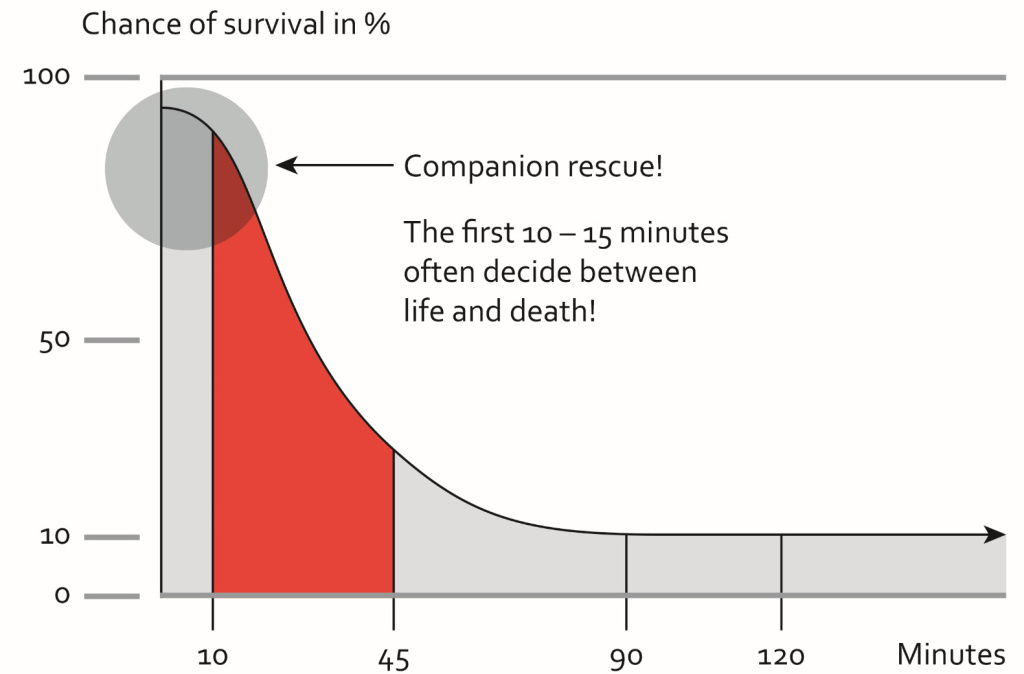
Systems at a glance

You have more than one pair of skiers?
Then we recomend to buy a second pair of Ski-Connectors.
So you don´t have to switch the connectors from i.e. freerider skies to the backcountry skiers. Simple much more convenience.
Please take care!
Thanks to the two long signal bands, using find—me! increases the chances of being found quickly in case of an avalanche. It does not in any way protect the user from the descent of an avalanche or snow slab. Please pay close attention to the warnings and do not take any risks. An avalanche is a life-threatening situation – no matter what equipment is used!
Use at your own risk. We recommend carrying an avalanche transceiver (or beacon), avalanche shovel, avalanche probe and avalanche airbag in addition to find—me!
All lengths are approximate values.


